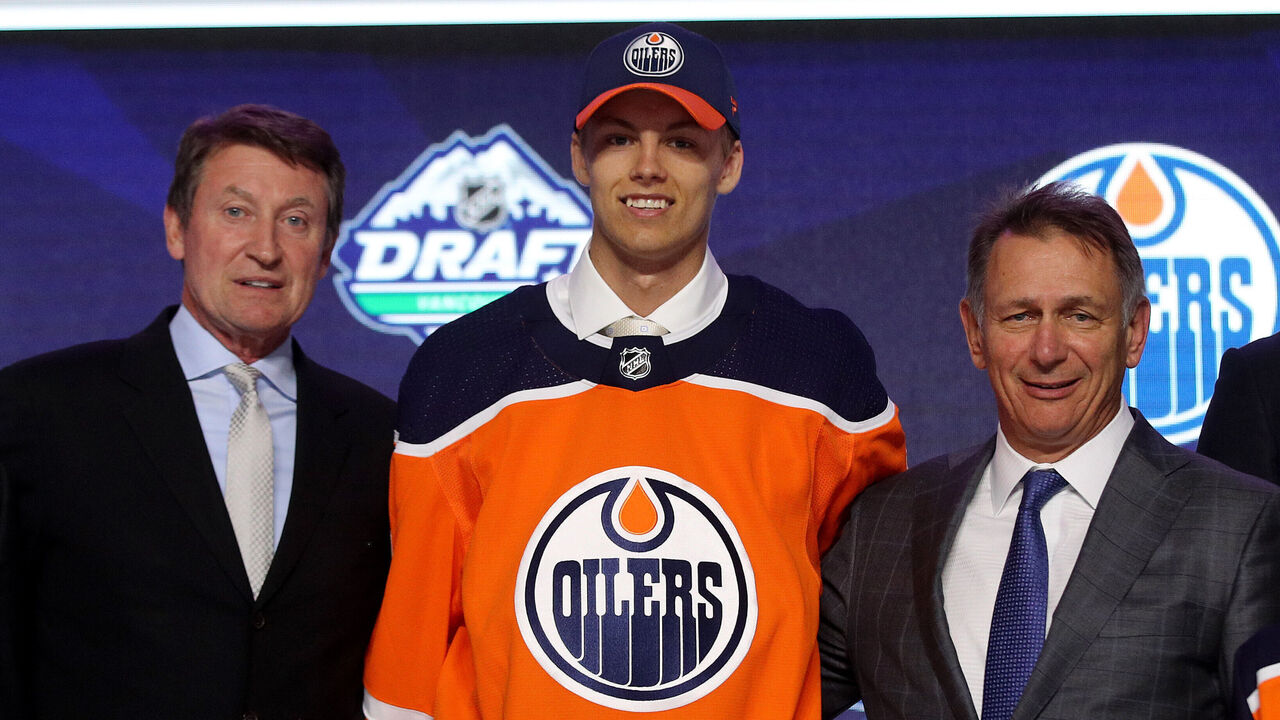NHL GMs' reluctance to use offer sheets a wasted opportunity
Doug Armstrong's joke that he would have submitted offer sheets for Philip Broberg and Dylan Holloway even if his mother was the general manager of the Edmonton Oilers has, understandably, been widely shared. It's a good line - even if his mom might disagree.
But the St. Louis Blues general manager said something else in the same interview that's even more interesting. If there's a "GM code" that says offer sheets are improper, "nobody emailed it to me," Armstrong said.
On one hand, this is a perfectly obvious statement. Offer sheets, which under NHL rules allow a team to bid for restricted free agents who reach a number of criteria with their current team regarding service time and age, shouldn't have any unwritten rules. Armstrong is just doing his job. It's weird this even needs to be said.
On the other hand, it's a tool that's rarely used. Offer sheets are so unusual that the instances when they do get used are memorable. There was that time when Brian Burke, then the Anaheim GM, wanted to fight Kevin Lowe, then the Edmonton GM, over an offer sheet for the Ducks' Dustin Penner. (It wasn't matched, and, as far as anyone knows, they didn't fight.) There was the instance when Carolina submitted an offer sheet for Montreal's Jesperi Kotkaniemi in semi-revenge for the Canadiens' unsuccessful move for the Canes' Sebastian Aho a couple of seasons earlier. (Carolina's offer gave Kotkaniemi a signing bonus of $20. Aho wears No. 20. Nudge, wink.)
Even with Broberg and Holloway now members of the Blues after the Oilers declined to match, there have been fewer than 50 NHL players in league history who have even been targeted with offer sheets. In the salary-cap era, with byzantine rules that make it more difficult to acquire young talent, just 12 players have been tendered offer sheets.
Maybe there really is a GM code that prevents such a thing. Has Armstrong checked his junk mail folder?
There are a couple of reasons for the lack of movement on restricted free agents over the years. Offer-sheet compensation has been expensive in terms of draft-pick compensation at times, so executives have been wary about losing those picks - which are still the cheapest way to add young players to their organization - even if it means adding a frontline talent. It's also true that, formally or otherwise, the lack of competition for RFAs has the effect of suppressing salaries. It's not necessarily the C-word, but if teams started using offer sheets more often, the compensation of players in that category would rise. (The C-word is collusion, just to be clear.)
And yet, there absolutely should be more offer sheets. This is a league in which contending teams are routinely right up against salary-cap limits and often over it, having to resort to long-term injury-reserve shenanigans to create space while shuttling players down to the minors to trim a few days' wages off the payroll. The Oilers' situation wasn't unique. They were (and are) capped out, with a couple of young players, both first-round picks, that they wanted to keep on the kind of cheap, team-friendly, short-term deals that are common for young guys yet to nail down major roles.

The same could be said of about half the teams in the league. Armstrong swooped in to offer Broberg and Holloway contracts that, had the Oilers matched, would have given them zero flexibility to upgrade the roster in the coming season. Both contracts might be overpays, given their production thus far, but the Blues have filled a couple of roster spots for the price of a couple of draft picks that historically have a low hit rate. The double offer sheet was also a particularly nice touch, all but assuring the Blues would at least end up with one of their targets.
Why aren't more teams doing this? Anaheim and Calgary are each sitting on more than $20 million in cap space. Are they so certain of their draft and development plans that they wouldn't use a bit of that money to go after some other team's NHL-ready piece that they are trying to shoehorn in under the cap? Utah has about $10 million in cap space, and the repeated story is that ownership wants to be the anti-Coyotes and actually spend money on a competitive roster. One of the fastest ways to add talent would be to poach RFAs via offer sheet.
And while grabbing young players for relatively little compensation - in the case of the Blues, a second-round and a third-round draft pick - is certainly appealing, there's also the other end of the spectrum, when a large offer sheet for an established star would come at the cost of multiple first-round picks. It's risky, sure, but how many teams go through several draft years without landing a top-pair defender or a first-line forward? (Many. The answer is many.)
And not to pick on the Oilers here, but defenseman Evan Bouchard is a restricted free agent after the coming season. He might have been a Conn Smythe candidate in a world that didn't include Connor McDavid. Edmonton will hope to sign Bouchard to something of a hometown discount since the team must still negotiate new deals soon with McDavid and Leon Draisaitl. The conditions are there for some other team to offer him the money that Edmonton can't or won't.
Or did every other NHL executive get the GM code email that Armstrong missed?
Scott Stinson is a contributing writer for theScore